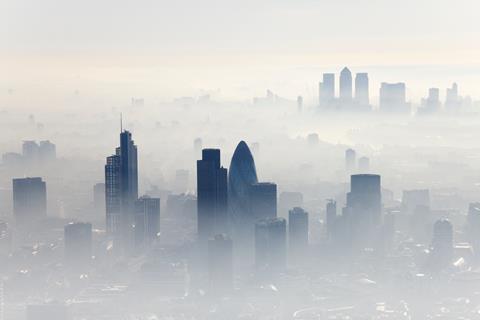The race to net zero emissions is on, and decarbonising the built environment - responsible for 37% of the world’s CO₂ output - is critical if corporates and policymakers are to align with the Paris Agreement on climate change by 2050.

The COP26 climate change summit, held in Glasgow last November, saw significant progress in efforts to reduce harmful greenhouse gas emissions from the built environment.
A report from the UN Environment Programme states: “This year alone, and despite the COVID-19 pandemic, we see that global investment in energy efficiency in the buildings sector rose by over 11% to around $184 billion in 2020.”
However, Inger Andersen, Executive Director of the UNEP, maintains that “actions are too few to drive the kind of structural transformation we need for our homes and workspaces’”She says most of the increase in energy efficiency spending has come from a “small number of European countries”, while two-thirds of countries with the largest growth in building stock still lack mandatory building codes.
Despite 136 countries including building efficiency or decarbonisation in their Nationally Determined Contributions (NDCs) - up from 88 in 2015 - there is “a lack of ambitious decarbonisation targets” in global climate goals.
UNEP says the next five years will be about widely adopting transformational approaches and implementing incentives and regulations that can elevate solutions to the required scale.
Investors can consider the increase in green premia (the value added to buildings with good ESG credentials) and brown discounting (a depreciation in the value of assets with poor ESG performance) as the carrot and stick to drive action limiting climate change within the real estate sector.
Deepki’s recent pan-European survey of 250 pension fund managers with a combined AUM of €402 billion, reveals that over the past 12 months, 40% of pension funds say they experienced depreciation of 21%-30% due to brown discounting.
A further 21% have seen assets devalue by 11%-20%, while 18% suffered dramatic depreciation of 31-40%.
Reflecting the direction of travel indicated in the UNEP report, almost two-thirds (62%) of European pension funds expect the impact of brown discounting to worsen over the next three years.
More than a third (37%) expect it to negatively impact assets by a further 31%-40%, while one-quarter say they will fall by 21%-30%, severely devaluing poor-performing real estate.
At the same time, the green premium effect is also evident.
Research from Knight Frank, covering prime real estate in London, Sydney and Melbourne, found an 8-18% sales price premium for BREEAM or NABERS-rated buildings compared to similar assets without green certifications across these markets.
Driving these market forces are the recent Sustainable Financial Disclosure Requirement (SFDR) introduced in the EU and the forthcoming SFR in the UK.
The SFDR requires asset managers to provide prescript and standardised disclosures on how they adopt ESG measures at both an entity and product level.
These regulations should be welcomed, as they are designed to reduce “greenwashing”, making it easier for investors to identify funds with authentic ESG credentials.
However, demand for “dark green” funds - referred to in Articles 8 and 9 under the SFDR – will likely contribute to even higher green premia and greater brown discounting.
For the 64% of European pension funds responding to the Deepki survey, who said that only 21%-30% of their fund’s commercial real estate assets have strong ESG credentials - and for the 19% with just 11%-20% - there is a real sense of urgency to future-proof their property portfolios.
Now more than ever, investors need the tools and guidance to evaluate and assess their real estate holdings to determine their ESG credentials, and limit the impact of future climate change regulations targeting the built environment.
As UNEP’s Anderson says, only when all stakeholders are fully engaged can we “create a built environment that is not only zero carbon and resilient, but provides inspiring places to live and work”.






























No comments yet